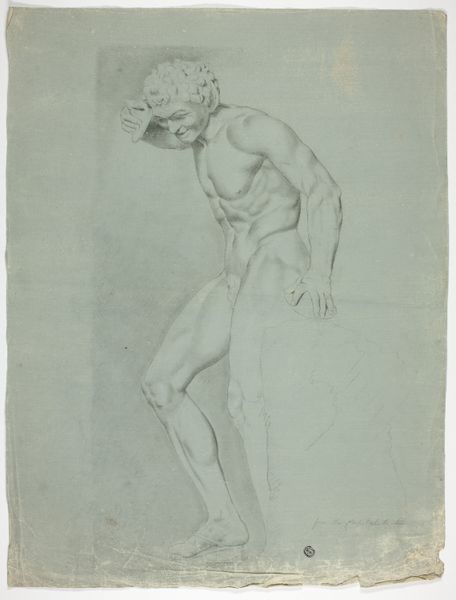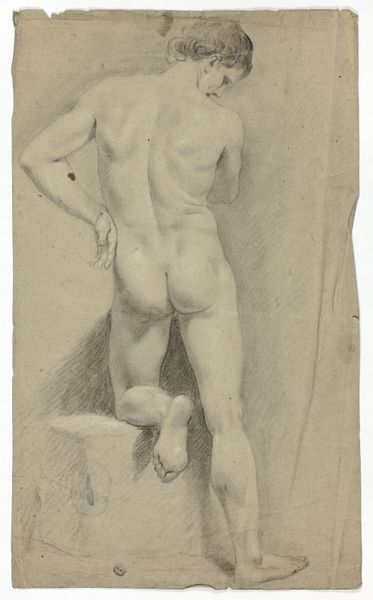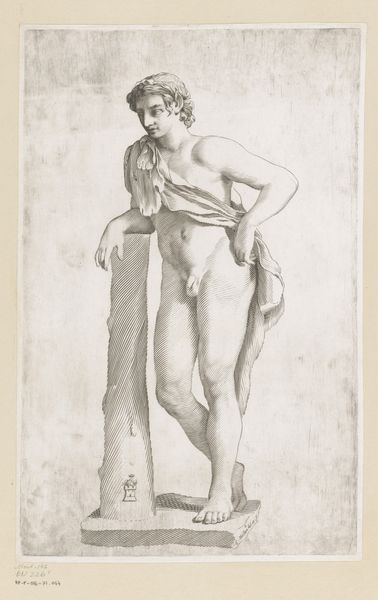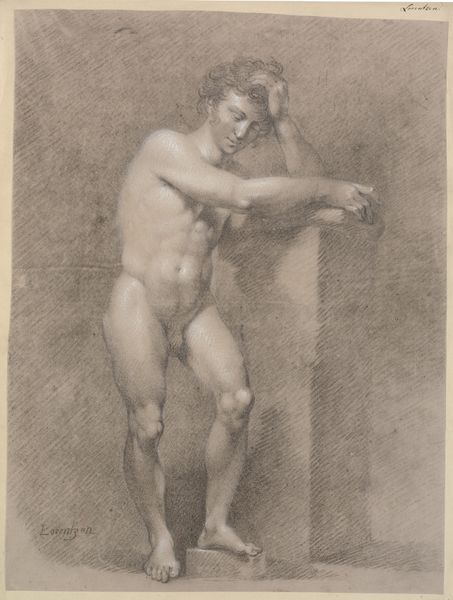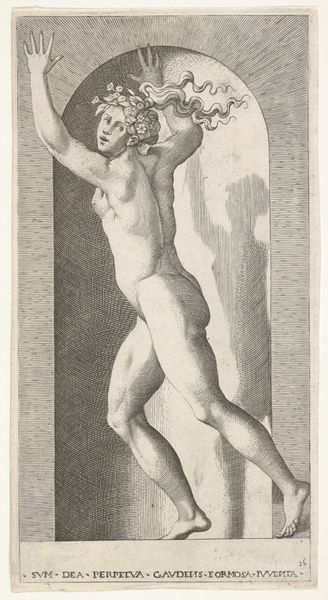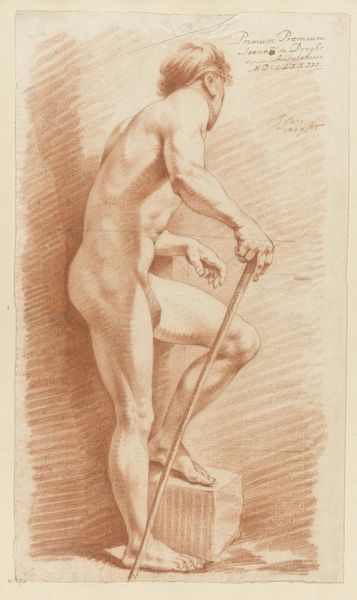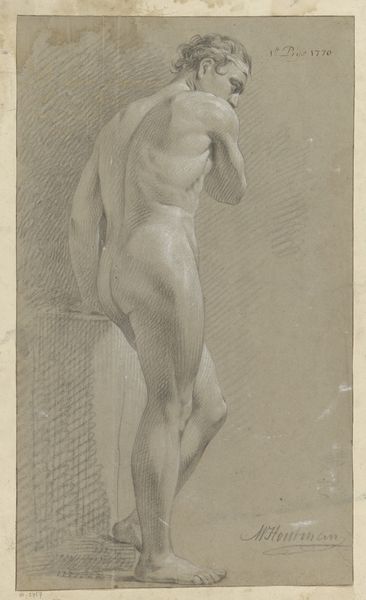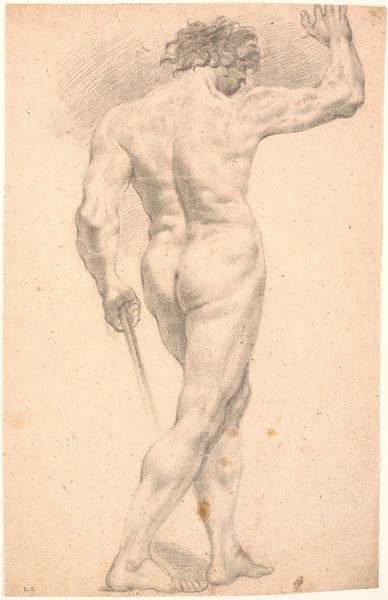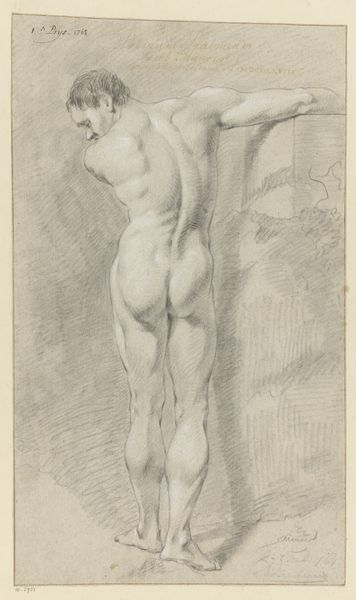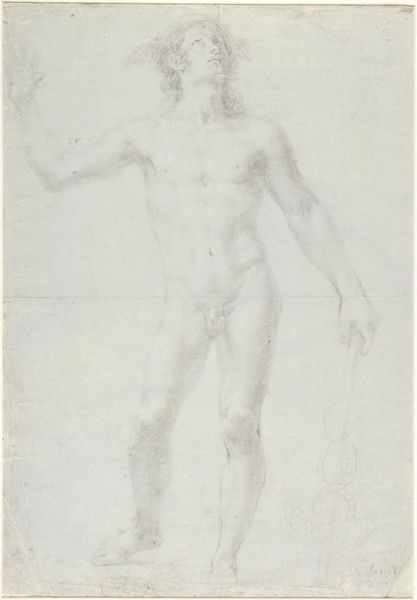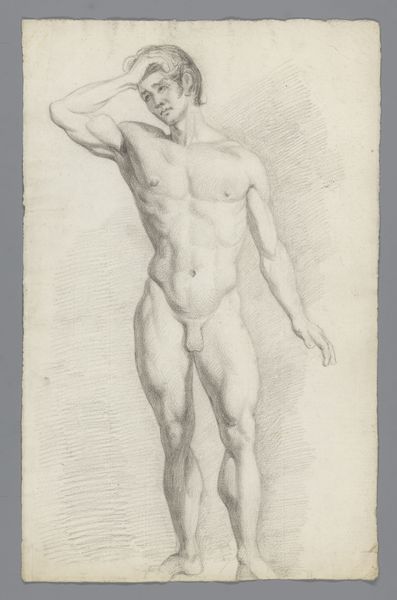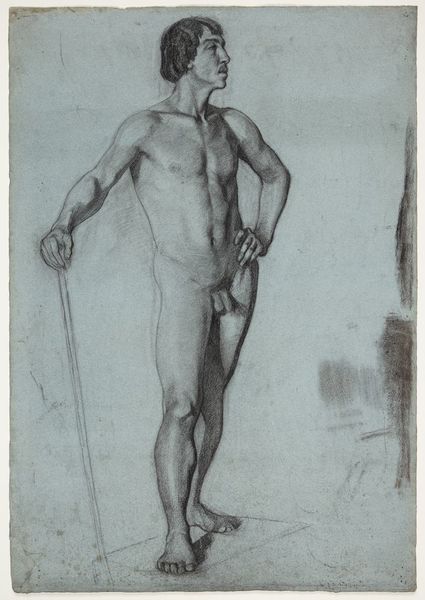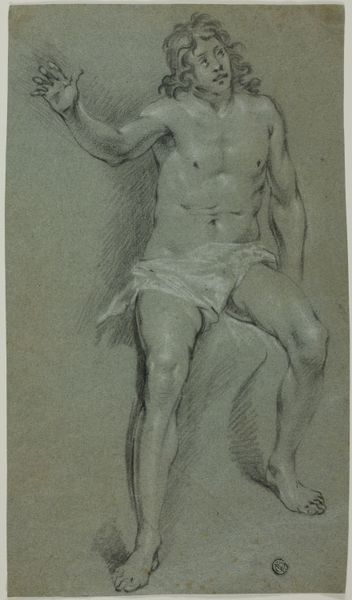
drawing, pencil
#
portrait
#
pencil drawn
#
drawing
#
neoclassicism
#
charcoal drawing
#
figuration
#
pencil drawing
#
pencil
#
portrait drawing
#
pencil work
#
academic-art
#
nude
Dimensions: 540 mm (height) x 386 mm (width) (bladmaal)
Curator: I find this pencil drawing rather striking, even in its apparent simplicity. It’s entitled "Model Standing En Face, with Raised Arms," created by Jens Juel sometime between 1745 and 1802. The Neoclassical style is unmistakable. Editor: There’s something incredibly vulnerable about that pose. He's exposed, but there is no context for understanding why, or even for whose gaze the pose is presented. Curator: Let’s consider Juel’s process and the likely purpose of such a drawing. Academic art education at the time, rooted in the guilds of the past, prized meticulous preparatory sketches. This wasn’t necessarily intended as a finished work but as a study of human anatomy and form in service of some, maybe never realised, history painting or formal portrait. What labor went into rendering, what sort of model posed, where was paper made and with what implications for the business and marketing of art at this period? Editor: Absolutely, and it prompts us to think about power dynamics, too. Male nudes in art historically cater to the male gaze, perpetuating ideas of masculinity and the objectification of the body, however classical. Given the era, we have to examine what the sitter might have been thinking or what the social implications of standing for so much art may imply. Who determined the narrative? Curator: Exactly. Even the pencil itself is part of the story – a relatively accessible and mass-produced tool that democratized drawing to some degree. It allowed for a precision and detail previously more difficult to achieve with traditional charcoal or metalpoint, in line with new demands in portraiture and print culture of the era. Editor: That said, it doesn't entirely excuse us from examining and pushing at the constraints around gender norms it simultaneously imposes. We can see beyond "fine art" versus disposable draftsmanship and also grapple with what that means culturally. Curator: Indeed. Understanding both the material means of production and its cultural context allows a much more complete understanding of pieces like this drawing by Juel. Editor: It's like excavating a silent conversation across centuries.
Comments
No comments
Be the first to comment and join the conversation on the ultimate creative platform.
